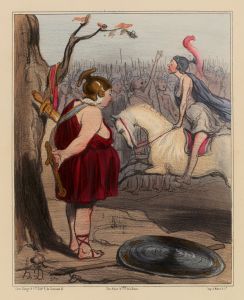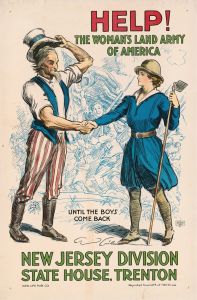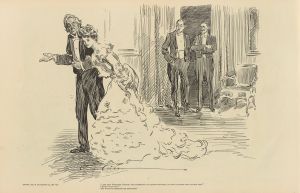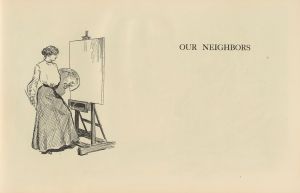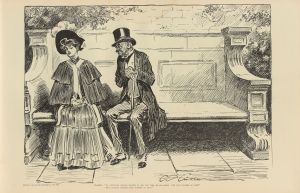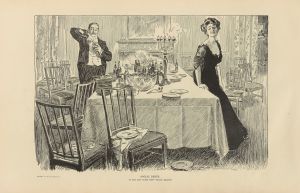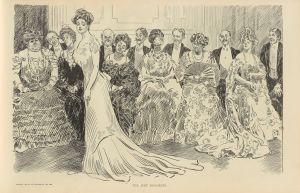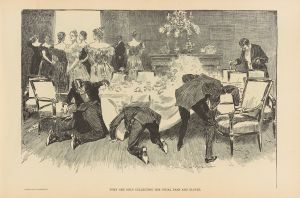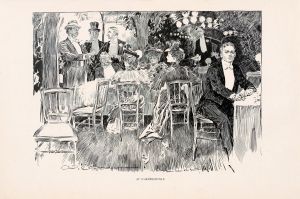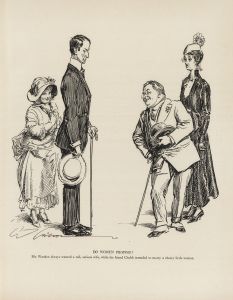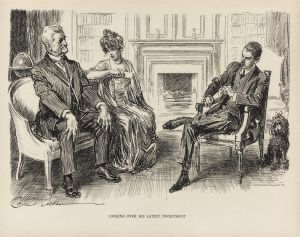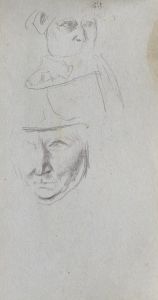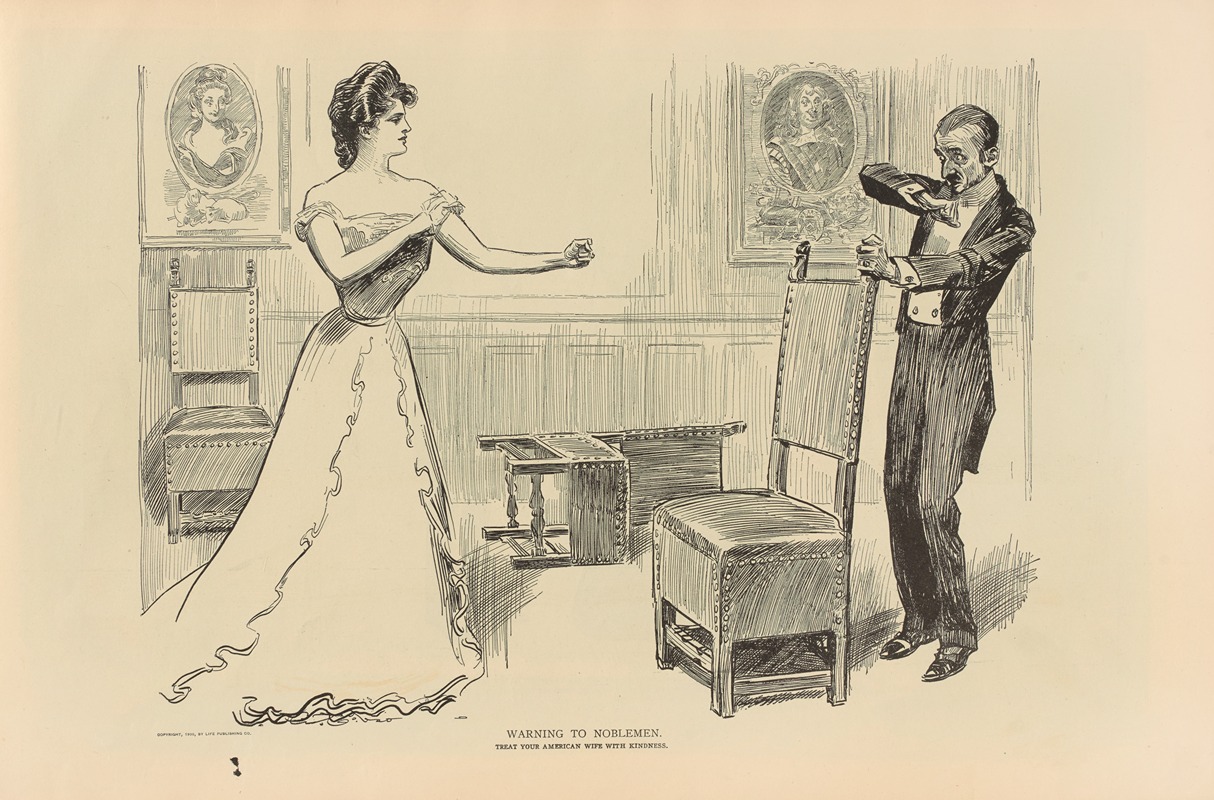
Warning to noblemen. Treat your American wife with kindness
A hand-painted replica of Charles Dana Gibson’s masterpiece Warning to noblemen. Treat your American wife with kindness, meticulously crafted by professional artists to capture the true essence of the original. Each piece is created with museum-quality canvas and rare mineral pigments, carefully painted by experienced artists with delicate brushstrokes and rich, layered colors to perfectly recreate the texture of the original artwork. Unlike machine-printed reproductions, this hand-painted version brings the painting to life, infused with the artist’s emotions and skill in every stroke. Whether for personal collection or home decoration, it instantly elevates the artistic atmosphere of any space.
"Warning to noblemen. Treat your American wife with kindness" is a notable illustration created by Charles Dana Gibson, an influential American graphic artist best known for his creation of the iconic "Gibson Girl." The illustration was published in the early 20th century and is part of Gibson's broader body of work that often commented on social norms and relationships of the time.
Charles Dana Gibson was born on September 14, 1867, in Roxbury, Massachusetts. He gained widespread fame in the late 19th and early 20th centuries for his pen-and-ink illustrations, which were featured in popular magazines such as Life, Harper's Weekly, and Scribner's. Gibson's illustrations often depicted the "Gibson Girl," an idealized image of the American woman that combined beauty, independence, and a sense of self-assuredness.
"Warning to noblemen. Treat your American wife with kindness" reflects Gibson's keen observation of social dynamics and his ability to infuse humor and critique into his work. The illustration portrays a scene where an American woman, presumably married to a European nobleman, is depicted in a position of strength and confidence. The title itself serves as a cautionary note to European aristocrats, suggesting that American women should be treated with respect and kindness, likely reflecting the changing attitudes towards women's roles and rights during that era.
The context of this illustration can be understood against the backdrop of the late 19th and early 20th centuries, a period marked by significant social change. During this time, many American heiresses married European noblemen, often bringing substantial dowries that helped to restore the fortunes of financially struggling aristocratic families. These transatlantic marriages were sometimes viewed with skepticism and were a subject of social commentary and satire.
Gibson's work, including this particular illustration, played a role in shaping public perceptions of these marriages. By highlighting the importance of treating American wives with kindness, Gibson may have been advocating for a more egalitarian approach to marriage, reflecting the progressive attitudes towards women's rights that were gaining momentum in the United States.
The illustration is executed in Gibson's signature style, characterized by precise lines and detailed shading, which effectively captures the expressions and postures of the characters. This style not only made his work visually appealing but also allowed him to convey complex social messages with clarity and impact.
Charles Dana Gibson's contributions to American art and culture extend beyond his illustrations. He was also an influential figure in the art community, serving as the president of the Society of Illustrators and playing a key role in the establishment of the School of Illustration in New York City. His legacy continues to be celebrated for its artistic merit and its insightful commentary on the social issues of his time.
In summary, "Warning to noblemen. Treat your American wife with kindness" is a significant work by Charles Dana Gibson that encapsulates his ability to blend artistry with social critique. It serves as a historical artifact that offers insight into the cultural and social dynamics of the early 20th century, particularly in the context of transatlantic marriages and the evolving roles of women.





